 BPaaS Design Environment Prototype v0.2
BPaaS Design Environment Prototype v0.2
This Modelling Environment provides a combination of the Business Process Model and Notation (BPMN 2.0) and the Decision Model and Notation (DMN). Moreover, you can define with this tool working environment models, document models and company map models.
Documentation:
BPaaS Design Environment: WEBINAR
Downloads:
Library and Models:
CloudSocket Library and Models
Model-type Descriptions:
BPaaS Design Package
This meta model enables the assignment of business processes, workflows, KPIs and deployment rules. Hence it is understood as an index, to identify, how the BPaaS models are combined. In case vaild BPaaS Design Packages are queried, models of this model type will be accessed to get the available BPaaS Bundels.
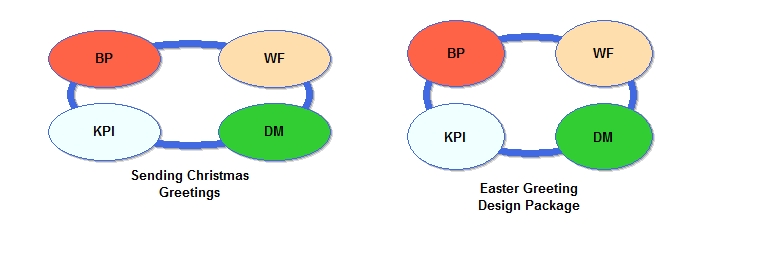
Business Processes Model
This metamodel defines a minimal subset of BPMN 2.0 that can be used to define business processes that can be linked to a decision model. The subset is selected based on practical experience of the types of concepts used for modelling such procedures.
- BPMN DI
For the interchange of the business processes and the workflows, BPMN DI is used. Currently, the transformation from the ADOxml format to the BPMN DI and vice versa is done with the free online transformation of the ADONIS CE website:
-Import
BPMN DI Import
-Export
BPMN DI Export
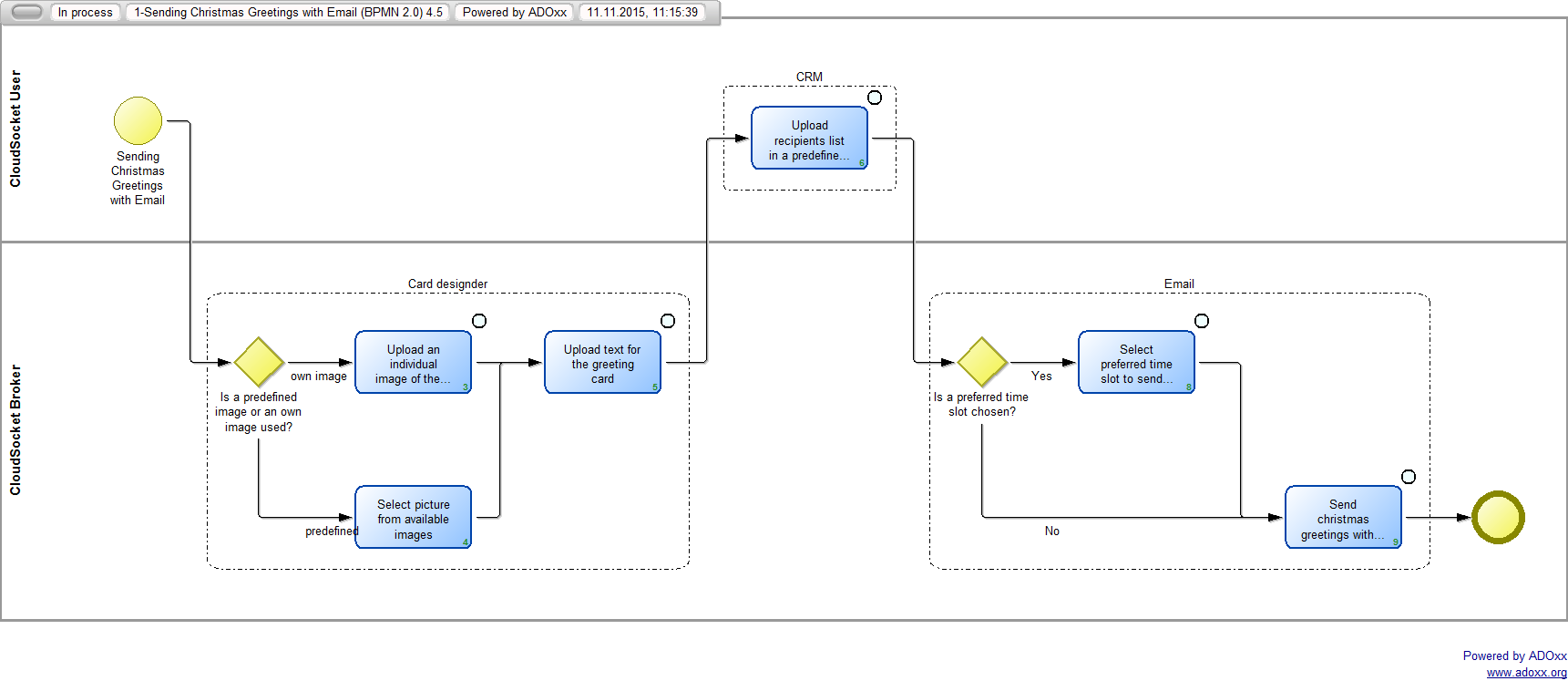
Service Description Model
With the additional model-type "Business Process Service Description" which consist of the class "Activity Description" a business process designer is able to define or describe the characteristics of a service which is needed in six different aspects
-
Functional
- Input
- Output
- Non-Functional
-
Business
- Regulatory
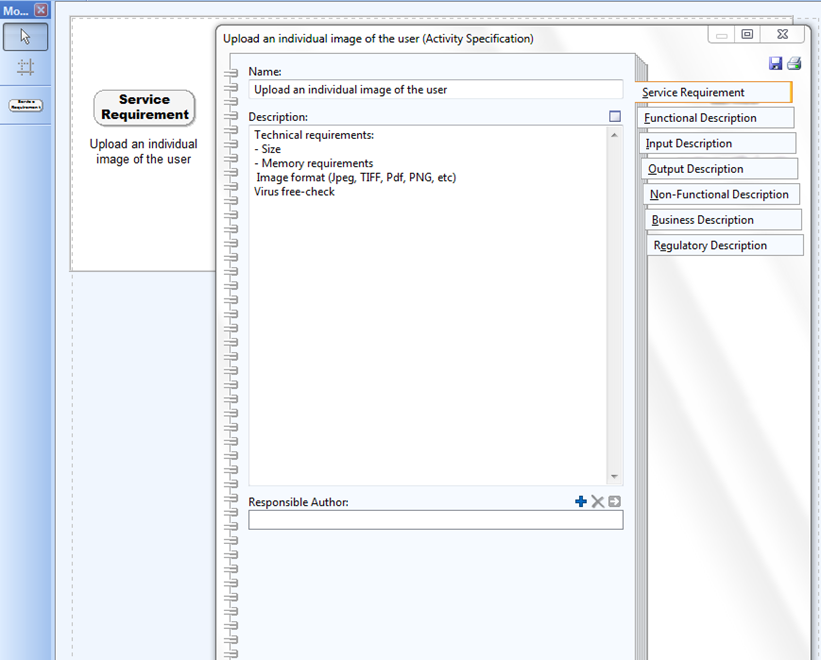
Decision Model
This model-type gives you the possibility to design your business decisions. The aim is to enable business users (e.g. analysts, technical developers) to comprehend the decisions that have been defined.
Working Environment Model
Organization models describe the structure of an organization (organization chart). In this prototype, organizational structure models can be built hierarchically using organizational submodels to e.g. illustrate a detailed structure of a working environment.
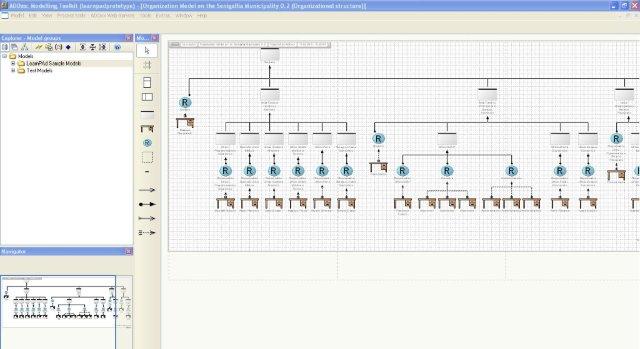
Document Model
Document models contain documents (templates), which are utilized in the processes (input, output to activities etc.). Document models can be built hierarchically using document submodels to e.g. illustrate a detailed structure of documents.
KPI- Cause and Effect Model
This model type offers an overview of strategic and operational goals and the performance indicators used to measure the target levels achievement of those goals.
In CloudSocket there are three different layers to define the goals and the corresponding performance indicators:
i) Business Process Layer
ii) Workflow layer
iii) Deployment Layer
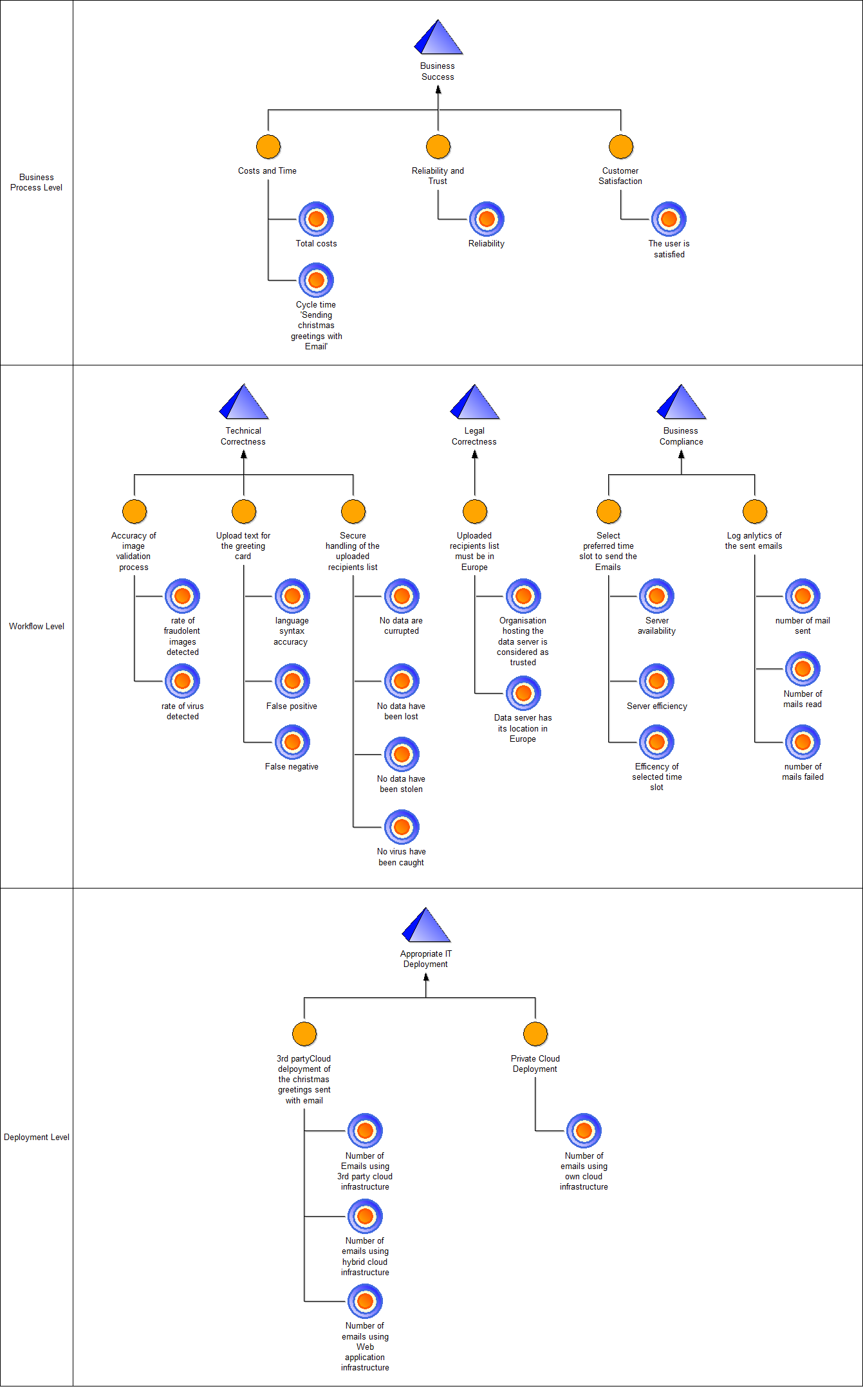
KPI- Indicators model
In the indicators models, all relevant information concerning indicators and ratio systems are represented graphically. On the one hand the formulas for calculating performance indicators are defined and on the other hand, the data sources needed for operational data access.
 www.adoxx.org
www.adoxx.org